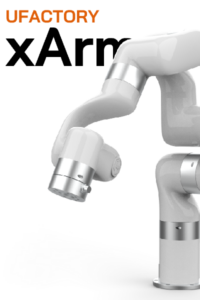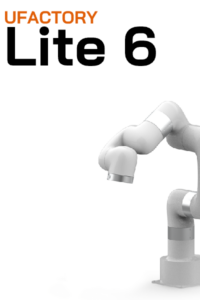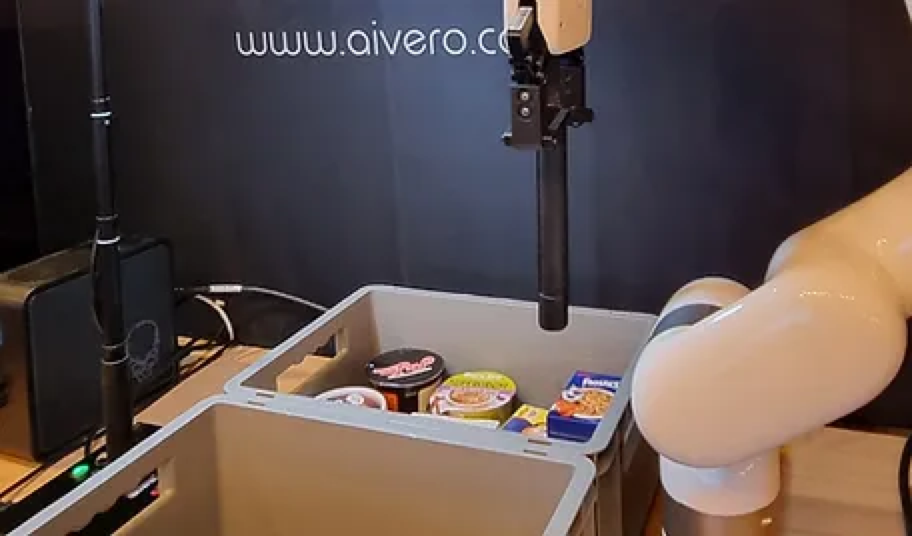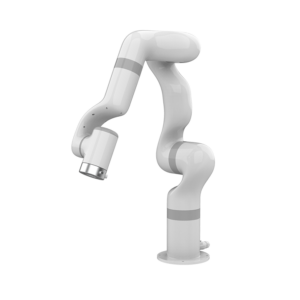Introduction
Articulated robots are the most well-known machines on the factory floor of the future. This image has been a part of our culture for decades, showing up in everything from cartoons and movies to even stock photos. Also, even though we’ve moved past the basic articulated prototype and made some amazing, cutting-edge robots, the image is so firmly embedded in our minds that industrial robotics companies still make them. What benefits do articulated robots offer? How come so many production facilities stick with this tried-and-true standard bearer?
What is an articulated robot?
Most industrial robots are articulating robots. The fact that they look like human arms helps them stick in our memory. The mechanical advantages of this design, however, are what has contributed most to its widespread use and continued success. The design of the arm incorporates the benefits of precise motion with the advantages of a linear reach and a wide range of rotational motion. Welding, pick-and-place operations, material handling, and dispensing are just some of the many applications where an articulated arm shines. Due to their high degree of freedom, they can practically access every location within their working range. Due to their adaptability, mobility, and compact size, articulated robots are among the most popular types of industrial automation today.
Who Invented the articulated robot?
Prior to his untimely death on September 20, 2016, American robotics innovator Victor David Scheinman, born on December 28, 1942, made significant strides in the industry. His father, Leonard, was in the United States Army, and the family moved to Augusta, Georgia, where he was born. After the war, his father worked as a professor of psychiatry, and the family relocated to Brooklyn. His mom was a Hebrew school teacher.
Scheinman’s earliest memory of robots is from when he was 8 or 9 and saw the movie, The Day the Earth Stood Still. The film scared him, so his dad suggested he try making a wooden replica of the scary scene as a form of rehabilitation.
In the late 1950s, when Scheinman was a student at New York’s now-closed New Lincoln School, he made a typewriter that could be controlled by voice. In addition to laying the groundwork for his future innovations, this effort got him accepted at MIT as an engineering student.
At Stanford University, Victor Scheinman developed the Stanford Arm, an electric, six-axis articulated robot that was intended to serve as an arm solution. In addition to opening up the articulated robot to more complex tasks like welding and assembly, this also gave it the ability to follow arbitrary trajectories in space correctly. Following this, Scheinman created what has come to be known as the “MIT arm” for use in the MIT Artificial Intelligence Laboratory. Unimation awarded Scheinman a fellowship to pursue his ideas, and the company eventually bought and refined those ideas into what they called the Programmable Universal Machine for Assembly (PUMA), which they sold to General Motors.
What is the articulated robot configuration?
The mechanical motion and structure of an articulating robot are quite similar to those of a human arm. A twisting joint connects the arm to its base. There can be anywhere from two to ten rotational joints (or “axes”) in the arm itself, with the range of motion increasing with each additional joint. Standard articulation ranges for articulated robots are 4 or 6 degrees of freedom. The servo motors that drive the joints function like bezel gears, reversing the motion direction by up to ninety degrees and providing dial-in stops for finely tunable motion.
Advantages and disadvantages of articulated robot
In recent years, collaborative robots have been the go-to solution for businesses across industries looking to automate their processes. This is especially true in the manufacturing industry, but it also applies to other fields. Here are the advantages and disadvantages to look out for:
Advantages of articulated robot
1. High flexibility
Articulated robot, like the human arm, has multiple axes and can work at any angle or trajectory, so its working range is extensive. The flexibility also enables fast and simple changeovers for increased production uptime and allows the articulated robot to be customized for diverse applications.
2. Space-saving
Articulated robots have a compact structure and only take up a small space. Lighter and more compact than its predecessor, integrated robots come with a slimmer arm to allow work operation in small spaces, giving it an ample work envelope.
3. Multi-Application Capabilities
Articulated robotic arms can be used in a wide variety of robotic settings. The articulated robot is capable of robotic assembly, automated welding, and automated pick-and-place. Articulated robots simplify production because a single industrial robotic arm can perform a variety of jobs, cutting down on the number of necessary parts.
Because of their adaptability, articulating robots is a wise financial investment that may be put to use in other departments if and when product lines are reorganized. Because of their limited flexibility, fixed manufacturing equipment cannot be used to meet changing production demands.
4. Reliability
Articulated robots have greater reliability than conventional manufacturing robots, which is even another benefit. Their improved precision and accuracy guarantee that application results are constant and never wander from the predetermined course. The quality of the final product is increased since the manufactured components are consistent and error-free.
Since articulated robots work without stopping for rest or maintenance, productivity rates become steady and predictable as well. Material waste errors and lengthy cycle times can all be avoided with dependable production procedures, which can help keep costs stable or even reduce them.
Disadvantages of robotic arms in industries
1. Less Speed
The speed of an articulated robot isn’t as fast as other types of robots, such as the delta robot. This is because its axes are much larger than others, and its weight is heavy.
2. Payload Limitation
the articulated robot has a payload limitation because it has multiple axes and a heavyweight. With a payload capacity of 3kg to 20kg, they are used for less bulky operations.
3. Cost
its cost is more expensive than other types of robot arms. This is because the monthly maintenance and operational fees, in addition to the cost of articulated robots, increase exponentially.
4. Maintenance Concerns
Always keeping an eye on articulated robots is essential for preventing them from developing mechanical problems that would lead them to stop working. The business may suffer as a result of this. Technological developments have made robot surveillance a breeze. This can be done even in an off-site location. Robots can provide textual updates on their procedures to the human supervisor. The robot can be fixed from a distance without needing to be stopped if a technical problem arises.
5. Complicated programming
Articulated robots are very technical, and programming is done offline. This means a robot programmer or service provider is required to set up the program for each articulated robot.
6. Requires professional service
In many cases, the company looking to acquire a robot lacks the internal resources to properly integrate and operate the new machine. To make the most of articulated robots’ potential in production, workers must have the proper training or professionals are employed to operate the robot.
What are articulated robots used for?
When compared to other robots, the functionality of articulated robots is extensive. That’s why they’re a fantastic choice for a wide variety of uses. The industrial use of articulated robots typically entails the following:
Material Handling
Handling materials is a typical industrial use for articulated robots. Palletizing, pick-and-place, and bin-picking are all examples of what this category encompasses. For these uses, articulating robots shine because of their scalability to deal with heavy loads and extended reach. These tasks often grow too challenging for other robot categories to handle. As an illustration, a delta robot may complete a pick-and-place job in record time. But supposing the piece is a solid piece of steel, like a billet? The delta has suddenly become overwhelmed by the magnitude of this challenge. To give some context, the most advanced kinds of articulated arms can lift more than a thousand kg. Something between 10 and 20 kilograms might be manageable for a large delta robot.
Welding
Welding was an early use case for industrial robots. Because of their exceptional dexterity, they are able to succeed in this field. It is common practice in welding applications for tasks to demand accurate motion at fixed angles. Other robots, such as SCARAs and Deltas, simply cannot reach these angles. If you use the improper robot for welding, you risk producing a low-quality finished product.
Assembly
There are many reasons why articulated robots excel in assembly settings. The mobility afforded by their joints sets them apart from other robots. Since they can carry more weight than most robots, they can be used to transport heavy objects. They are so exact that even minor assembly jobs are no problem. This is why articulated robots are used for the vast majority of automated assembly jobs.
Machine Maintenance
Articulated robots are often used for machine maintenance. Raw materials can be loaded and unloaded into machines with the help of automated machine tending. Again, the extended reach and improved agility of this robot make it ideally suited for this task. All you have to do is select the program on the HMI, and the robot will do everything from opening and closing the door to loading the part and operating it.
How does an articulated arm work?
Industrial robots can be positioned to reach objects thanks to articulated robotic arms. A 6-axis robotic arm is more versatile since it can move in 6 different directions. The work envelope is the area in which a robotic arm can perform its tasks. A robotic arm’s working space is limited by its axis orientation and reach. The larger the work envelope of a robotic arm, the more axes it has and the longer its reach.
The end-effector is also operated by robotic arms. The end-effector is the tool on the robotic arm’s wrist that really does the task. During operation, the articulated robotic arm will move into place so that it can reach the parts it needs to work on, and then it will carry out the necessary end-effector motions.
Robotic arms need to be programmed so that they can carry out certain manufacturing tasks. Typically, a controller and a teach pendant are used for this purpose. A teach pendant is used to input the initial instructions for the software. The robot’s CPU receives its instructions from the controller after the controller deciphers the application’s coded instructions. The central processing unit reads the code and directs the articulated robotic arm through the program.
Articulated robot cost
- Robot costs: As far as robots go, articulated robots are among the most expensive options. The cost of the robot is high, but that is only one of several things that can easily push the total price of a project well beyond the $100,000 mark. Some of these criteria are:
- Integration costs
- Training
- Accessories(grippers, sensors, range extender, end-of-arm tools)
- Safety equipment
- Maintenance
You must factor in all of these expenses if you want to get an accurate ROI. Realize that there will be additional expenses after the first investment in the robot arm. Many of these expenditures fluctuate based on the specifics of each use case. Complex projects, for instance, will have greater integration costs because of the difficulties of implementing and developing such a project. In some cases, additional safety equipment may be needed for more risky applications.
Investing in a robot is a costly endeavor. When figuring out how much money you’ll make back, remember to factor in all these expenses for your articulated robot. The benefits of process automation should therefore be carefully weighed.
Do you need more affordable alternatives?
Most industrial articulated robots are expensive. Here is the more cost-effective alternative—collaborative robots; you can replace industrial articulated robots with them in lightweight tasks
References
https://diy-robotics.com/blog/articulated-robots/
https://signalscv.com/2019/01/advantages-and-disadvantages-of-industrial-robotic-arms/
https://www.howtorobot.com/expert-insight/articulated-robots




